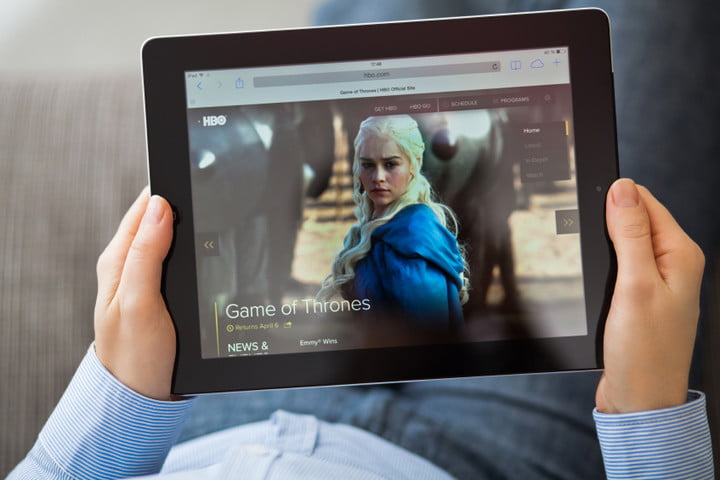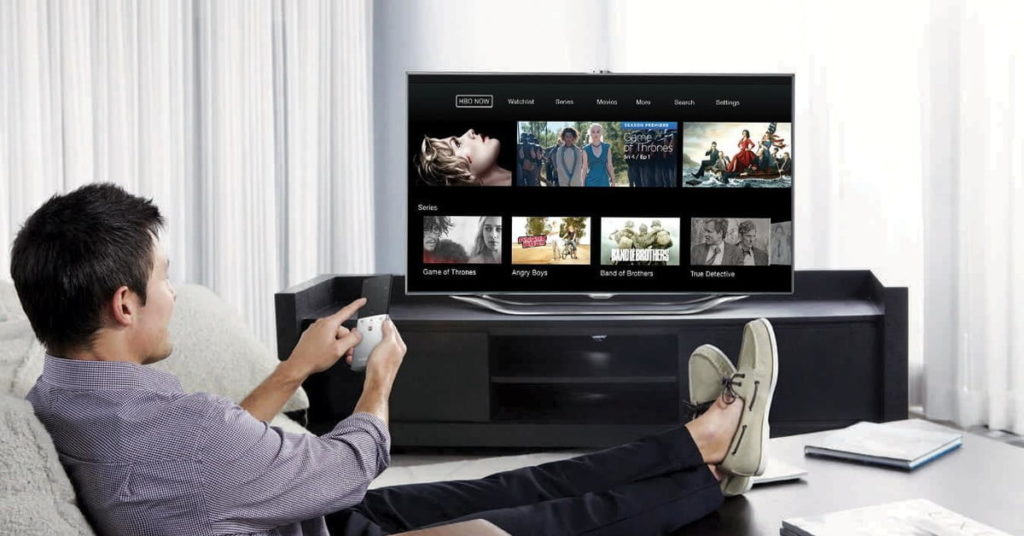HBO Go vs. HBO Now: Which Streaming Service Is Right for You?

HBO fans have it great these days. Subscribers can watch their favorite shows and movies whether seated in front of their TV or on a device while riding the bus to work. This freedom comes from the company’s twin streaming services, HBO Go and HBO Now, which allow subscribers to experience the wonders of Westworld and Westeros using their PlayStation 4, iPhone, or other HBO-compatible device.
With two different ways to stream the network’s coveted library of original content, there are probably some people who are wondering what sets the two services apart from each other. Like all siblings, the two have strong similarities, but there are some important differences that render each unique.
Let’s compare HBO Go against HBO Now. The good news is, they have a lot more in common than you might think.
Content
Every film, comedy special, and television series HBO offers is available regardless of whether you opt for HBO Go or HBO Now, and most content is available via both services at the same time as its original broadcast. The interfaces for both apps are also very similar — so much so, in fact, that the methods for navigating one will transfer to the other. They’re easy to figure out, with helpful sections that showcase both “featured” content and new releases.
Price

So, what do the two services cost? Well, this is where things get a little tricky.
HBO Now costs a flat rate of $15 per month. It’s a stand-alone package, which means it doesn’t require a cable subscription to use. HBO Go, on the other hand, is free with an HBO subscription — but that’s the only way to access it. So, in order to use HBO Go, one must first have HBO; and in order to have HBO, one must be paying for cable or satellite — ostensibly. There are some providers that offer HBO access to internet-only customers, who can simply access the content online. An HBO subscription can also be added `to services such as Amazon Prime Video, Sling TV, PlayStation Vue, and Hulu.
The vast majority of users access HBO Go via a cable or satellite subscription. The monthly rate for HBO varies between providers and plans, and sometimes special offers will further reduce the price. Some providers have even dropped HBO subscriptions to as little as $5 a month, but you could be paying anywhere from nothing (via an introductory offer) to $20 on top of what you already pay for cable.
Devices

HBO Go has been around since 2010 and has amassed a robust list of compatible devices in that time. When HBO Now was unveiled in 2015, the service was bound to a near-exclusive deal with Apple, which meant it was only available on devices such as the iPad, iPhone, and Apple TV.
Since the deal’s expiration in mid-2015, however, the company has steadily added support for HBO Now to a multitude of devices. The main difference between each platform’s compatibility is not the device, but the generation or version thereof. Check the table below to find out which of your devices are compatible with each streaming service.
Restrictions

So now that we’ve covered which devices the two services support, it’s time to discuss their respective limitations.
Luckily, there aren’t many, and most deal with access across multiple devices. In this regard, HBO Go is the more complicated of the two. In order to use HBO Go on a compatible device, you must first authenticate the service through a cable or satellite provider. This can be a bit tedious, but there’s no cap on the number of devices you can tie to your account.
HBO Now also allows limitless devices per account, but without the authentication requirement. Simply sign in with your HBO Now credentials, and you’re free to stream to your heart’s content — to a point. Both services will cap the number of videos being simultaneously accessed, which HBO claims is for security reasons. So, if you’ve got several devices trying to access different movies or TV episodes at the same time, you might run into the message “You’ve exceeded the number of simultaneous streams,” forcing you to sign out or restart your device. If all you have is a few devices online at once, streaming should be essentially unrestricted.
Another option
If you’re not looking to spend the dough on an HBO subscription, whether streaming-only or through your cable package, it’s worth noting that there are actually quite a few HBO-produced options available on Amazon Prime Video. Prime subscribers have access to a wealth of HBO-made content, and though it’s not the same volume as you’d get through HBO Go or HBO Now, it could be enough to make a dedicated HBO subscription less important.
Which is better?

In the battle between HBO Go and HBO Now, which comes out on top? The answer to that question depends almost entirely on you. Both services have small idiosyncrasies, but nothing that makes one the clear choice over the other — each one simply appeals to a particular kind of user: cord cutter or cable subscriber.
HBO Go makes the most sense for people who are already subscribed to HBO because (surprise!) you technically already have it. For those who have cable without HBO, it’s a toss-up, as your cable provider may or may not offer HBO for less than $15 a month.
HBO Now is targeted at those who opt to eschew traditional cable subscriptions in favor of Hulu, Netflix, Amazon Prime, and other à la carte streaming services, including Sling TV and PlayStation Vue. If you’ve cut the cord, HBO Now is not only your best option, it’s virtually your only option for watching HBO’s content — legally, anyway.
Since the list of HBO Now-supported devices has caught up with its older sibling, the differences between the two are purely circumstantial. In other words, the choice is yours.
Once you’ve chosen your desired platform, peruse our picks for the best movies and shows on HBO. If you opt for neither, well, there are plenty of good movies on Netflix.




